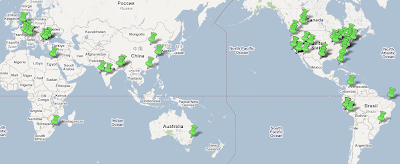Opentaps Now Supports Hibernate
We made a very significant and fundamental enhancements: opentaps now supports
hibernate as well as the original ofbiz entity engine. You can use the two interchangeably to store and retrieve data, but the addition of hibernate also gives us a more flexible query language, data validation, search, and distributed database capabilities. We think this will open up a lot of new opportunities for opentaps down the road.
Asterisk VOIP PBX Also Integrated
Enhanced Manufacturing and Inventory Planning
The inventory and manufacturing planning capabilities of opentaps, one of our traditional areas of strength, were enhanced with several new features, including:
- Support for routing specific Bills Of Material (BOMs)
- Minimum and maximum quantities for manufacturing routings in Material Resources Planning (MRP)
- Ability to edit and consolidate manufacturing and purchasing requirements
- Trace the source and usage of inventory items through their entire lifecycle
- Allow orders to be reserved in and shipped from multiple warehouses
An Easier Way to Segment Financial Data
Many organizations would like to be able to segment their financial results, and we introduced a new accounting tags feature which allows you to add up to 10 tags to all your invoices, payments, and general ledger transactions. For example, you can tag your transactions by division, department, activity, and cost center, and then see standard financial reports such as income statements, balance sheets, and cash flow statements for the different combinations of tags.
More Automated Testing Resources
We now have over 350 automated tests for the opentaps development trunk, which are run on both MySQL and PostgreSQL daily. We have also integrated the
Selenium and
Fitnesse testing frameworks into opentaps, so that we can add more automated front end testing as well.
The World of Opentaps
It's been almost 3 years since we unveiled opentaps at the MySQL Users' Conference in Santa Clara. Since that time, opentaps has grown both in capabilities and in its community. Last month, I used google map to make a map of where some of the organizations which use or provide services for opentaps are located, and the result is this map -- the
World of Opentaps:

Take a look -- there's probably somebody near you!







